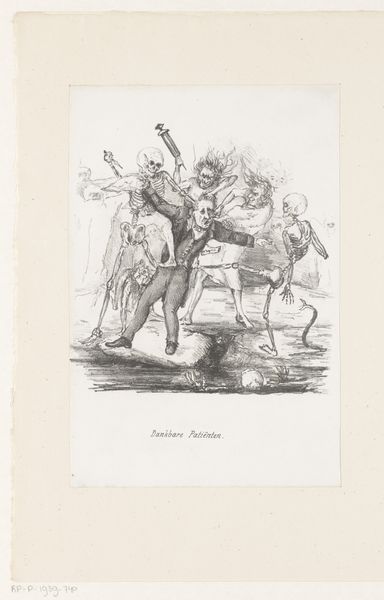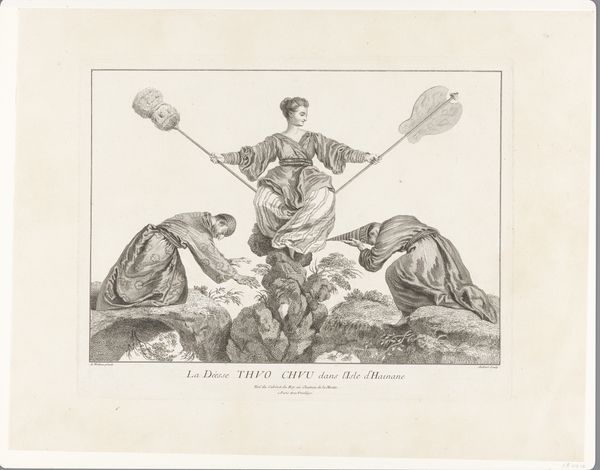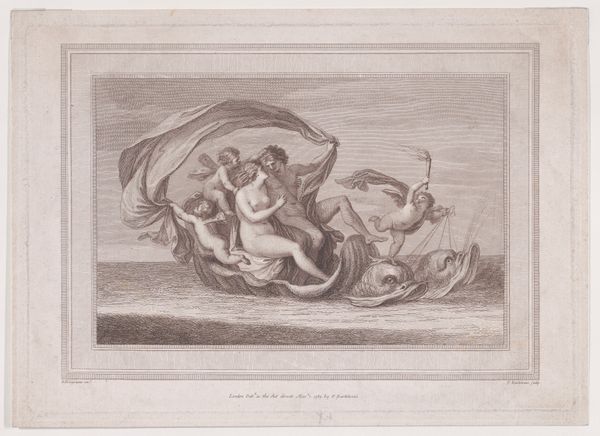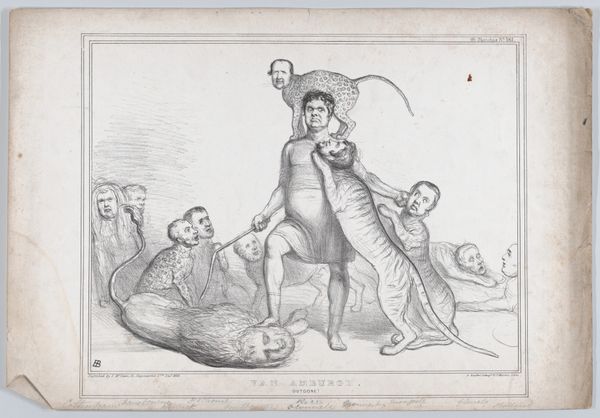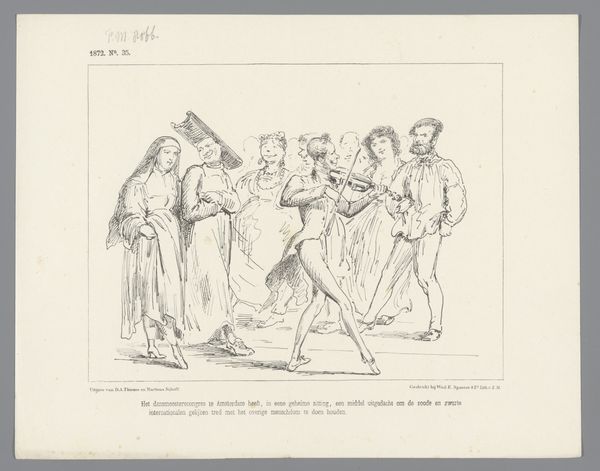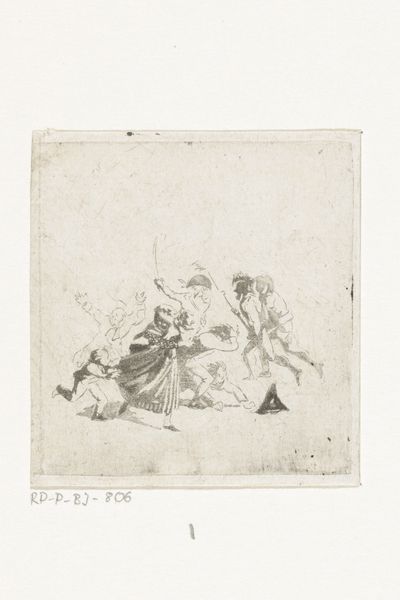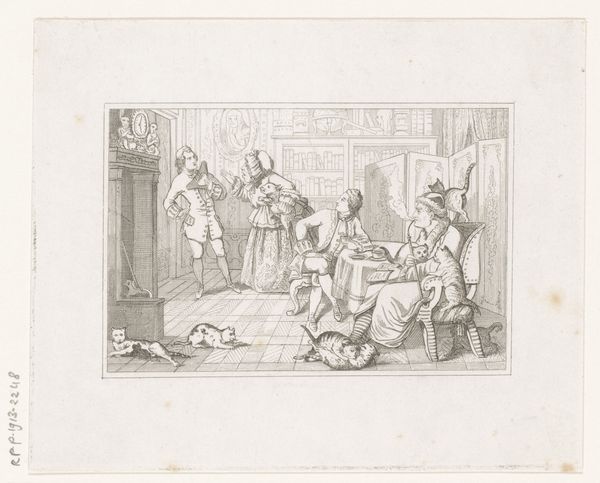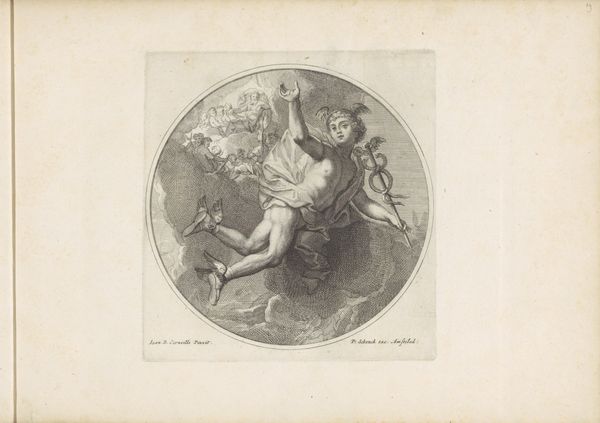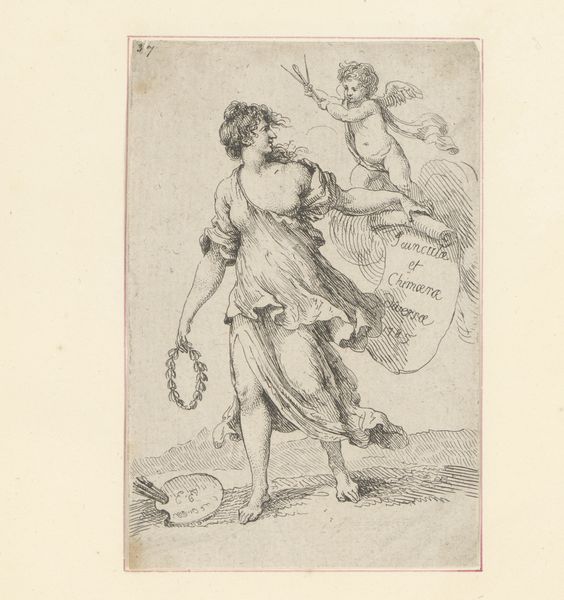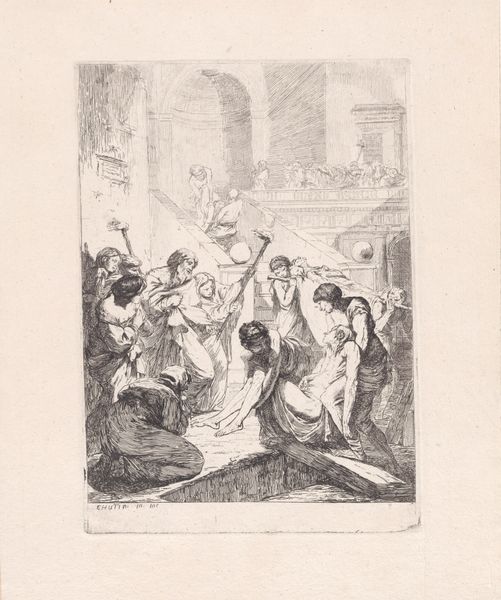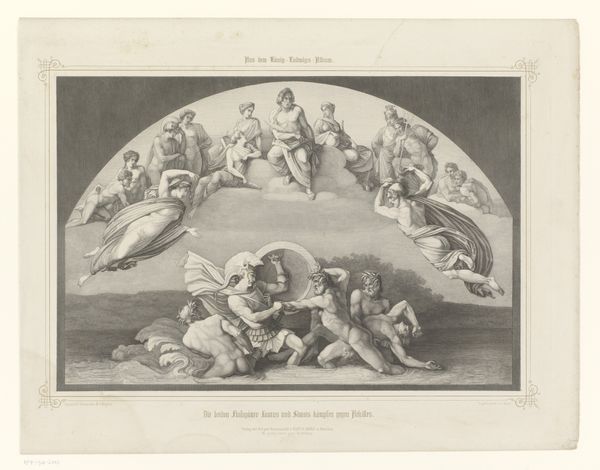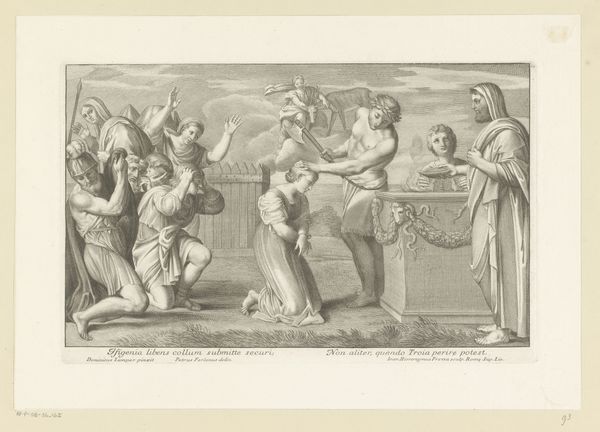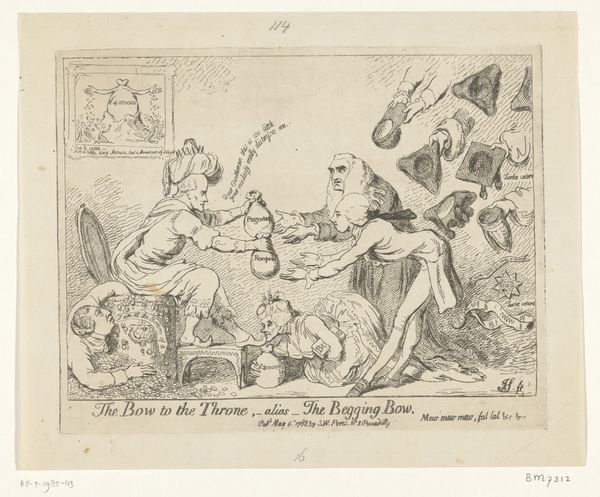
print, etching, engraving
#
narrative-art
# print
#
pen sketch
#
etching
#
asian-art
#
figuration
#
ink drawing experimentation
#
pen-ink sketch
#
orientalism
#
engraving
Dimensions: height 322 mm, width 405 mm
Copyright: Rijks Museum: Open Domain
Curator: Michel Aubert produced this engraving titled, "God flanked by two praying figures" in 1731. It's currently held at the Rijksmuseum. The work features a deity or goddess hovering over two figures in what seems to be an orientalist style. Editor: My first thought is that it has a strange kind of grace, doesn't it? Despite the linear harshness inherent in engraving, there is fluidity and a distinct elegance of composition here. Curator: Absolutely. We have to consider the broader context. This work would have been made during a period of intense European interest, bordering on obsession, with the East. This print speaks to the narratives Europeans were constructing about Eastern religions and societies. Note the parasol and fan being wielded. Editor: Those diagonal lines do frame the central figure. I'm struck by the contrast between the static, almost floating deity, and the bowed, active postures of the supplicants. There's a clear visual hierarchy established through line and form. The sharp etched lines contribute to a strong sense of depth. The way the light falls enhances the textures—the flowing robes, the wisps of hair, and even the scaly dragon beneath. Curator: I agree. And that emphasis reinforces colonial power dynamics. It's presenting a view of an exotic, subjugated culture bowing before a mysterious power. Look closer—the architectural details seem rather loosely "Asian," which hints at European fabrication. How reliable a representation of Eastern culture can it be, if the artists relies so heavily on invented or exaggerated elements? Editor: But perhaps we can still admire the way Aubert manages to achieve a tonal range. From the darkest lines defining contours to the lightest suggestion of shadow, there's a controlled, delicate manipulation of the medium at play, setting aside the colonialist framing. Curator: It's undeniable the artist displays exceptional technique, yet separating artistic merit from the social and political messaging feels, to me, somewhat like an ethical oversight. Editor: I suppose recognizing both its formal beauty and its troubling perspective helps us to better understand the complexity and contradictions of art in this historical moment. Curator: Yes. Nuance and critical examination is essential. A work like this allows us to have those important conversations.
Comments
No comments
Be the first to comment and join the conversation on the ultimate creative platform.
